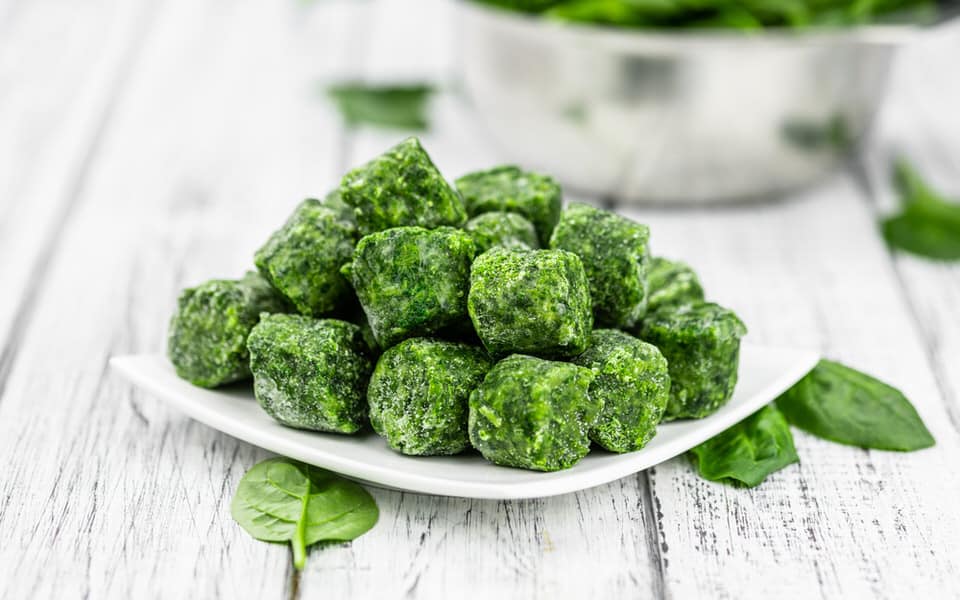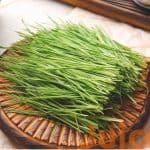If you love spinach smoothies and juice but hate the idea of buying fresh spinach every day, you’re in luck! You can’ freeze fresh spinach and use it as you usually would! You’ll just have to throw in a little extra water when blending.
Frozen spinach has a terrible reputation. Many people associate it with bland, flavorless dishes and consider it an “add-on” ingredient. But it doesn’t have to be that way.
Frozen spinach, when prepared correctly, can be a great addition to your diet. It’s nutrient-rich, packed with fiber, and high in vitamins A, C, and K. Unlike fresh spinach, frozen spinach has a much longer shelf life, so when you’re pressed for time, it’s perfect for whipping up a quick and easy meal.

Yes, you can make juice from frozen spinach, but it won’t be as ideal as juicing fresh spinach. Although spinach is nutritious, the pulp that remains after you juice it will not provide as many benefits as fresh spinach. So, it’s recommended that you liquefy fresh spinach for juicing.
Frozen spinach is a great source of vitamins and minerals
Spinach is a leafy green vegetable that is a member of the Amaranthaceae family. It has a very mild flavor and is often combined with other vegetables to make a salad. Spinach is also a rich source of iron, magnesium, calcium, and vitamins A, B, and C, and it also contains folic acid and potassium.
Spinach contains significant amounts of carotenoids, including lutein and zeaxanthin, which help maintain eye health and reduce the risk of cataracts. Spinach is an excellent source of vitamins and minerals. Spinach contains iron, calcium, potassium, vitamin A, thiamin, riboflavin, niacin, vitamin C, and vitamin K. It is also low in calories, fat, sodium, and cholesterol.
Spinach is considered a superfood. It’s rich in antioxidants and carotenoids, and it’s an excellent source of iron, folic acid, and potassium. Spinach is a very popular green vegetable, which can be eaten raw or cooked. Spinach is delicious served on the side or in salads, but it can also be used in smoothies, omelets, soups, pasta, and casseroles. The texture of spinach varies from soft to crispy.
How often should I drink spinach juice?
How often should you drink spinach juice? Some people drink it every day. Others drink it once or twice a week. However, if you’re not too fond of spinach or broccoli, you might be questioning whether this product is healthy for you. But don’t be too alarmed. Spinach is a rich source of vitamins C, K, and A, and it’s a great source of fiber. So, drinking spinach juice has its benefits.
Spinach is mostly water, so drinking spinach juice is a good way to stay hydrated. However, it’s really important to drink plenty of water in general, and spinach juice in particular, because spinach has diuretic effects, meaning it increases urine production. This can be very dehydrating; a study from the University of South Australia found that people who drank a large amount of spinach juice were more likely to get dehydrated than those who didn’t.2 So, although drinking spinach juice can have some health benefits, drinking too much can backfire.
Should I Buy Frozen Or Fresh Spinach?
Frozen spinach is a good option because it’s frozen at the peak of freshness. When spinach is frozen, it’s flash-frozen, which keeps it fresh for a long time. Spinach can last a long time in the freezer. Fresh spinach, however, is a better option because it’s as fresh as you can get. Buy bright and firm spinach — spinach that is beginning to wilt is past its prime.
How to use frozen spinach when juicing
Frozen spinach can be used in juices, smoothies, and salads. Frozen spinach is chopped spinach that has been flash-frozen and packaged. To use it, simply place the frozen spinach in a plastic bag and thaw it in the refrigerator. Frozen spinach can be defrosted overnight in the fridge, or it can be microwaved for 30 seconds.
Conclusion
The freshest-tasting spinach juice comes from frozen spinach that is defrosted in the refrigerator overnight. Store-bought spinach juice usually has too much water, resulting in a watery, bland beverage. So, if you can’t find fresh spinach, spinach grown in greenhouses is the next best thing.
In closing, the spinach needs to reach room temperature before juicing. Also, it’s best to use a food processor to puree the spinach for the smoothest results.





